Fashion is a dynamic expression of culture, society, and individual identity. Over the decades, men’s fashion has significantly transformed, reflecting broader societal and technological changes.
In this blog post, we’ll explore the captivating history of men’s fashion, answering questions about how fashion has changed over time for men, whether men’s fashion is growing, and how men’s fashion has evolved to be what it is today.
How Has Fashion Changed Over Time for Men?
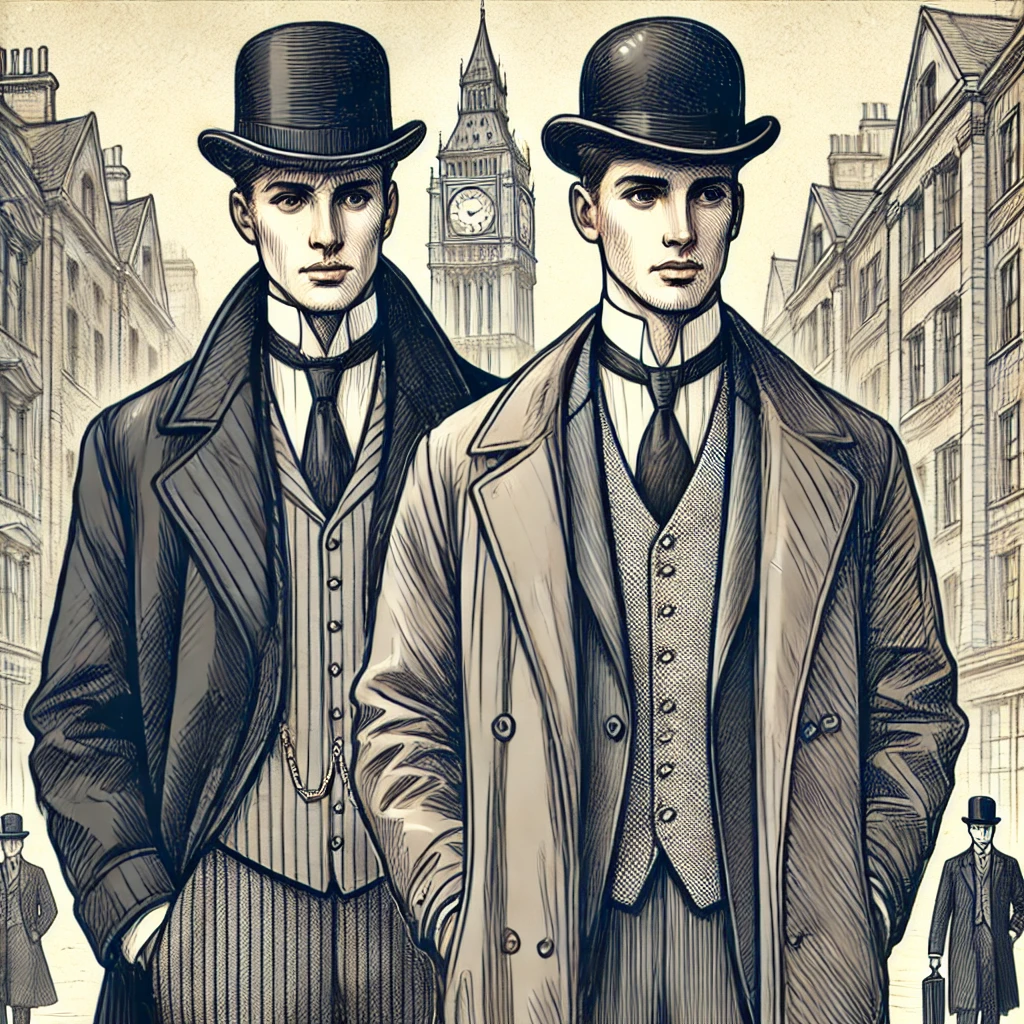
Men’s Fashion in the 1900s
Men’s fashion history has had many diverse influences and styles. At the beginning of the 20th century, men’s fashion was characterized by formal attire.
The early 1900s saw men in stiff collars, long coats, waistcoats, and bowler hats, reflecting a society that valued formality and structure. European fashion heavily influenced this period, particularly the styles in London and Paris.
Men’s Fashion in the 1920s
As we moved into the 1920s, the influence of jazz culture and the Roaring Twenties introduced a more relaxed style. The iconic zoot suit, with its high-waisted, wide-legged trousers and long jackets, became popular in places like New York. This era began a more expressive and individualized approach to men’s fashion.
Casual wear included argyle sweaters, knickerbockers, and plus-fours. Accessories like fedoras, bowler hats, pocket watches, and suspenders were common.
Footwear included polished Oxfords, brogues, and two-tone shoes. The overall style was elegant and modern, reflecting the Jazz Age’s exuberance
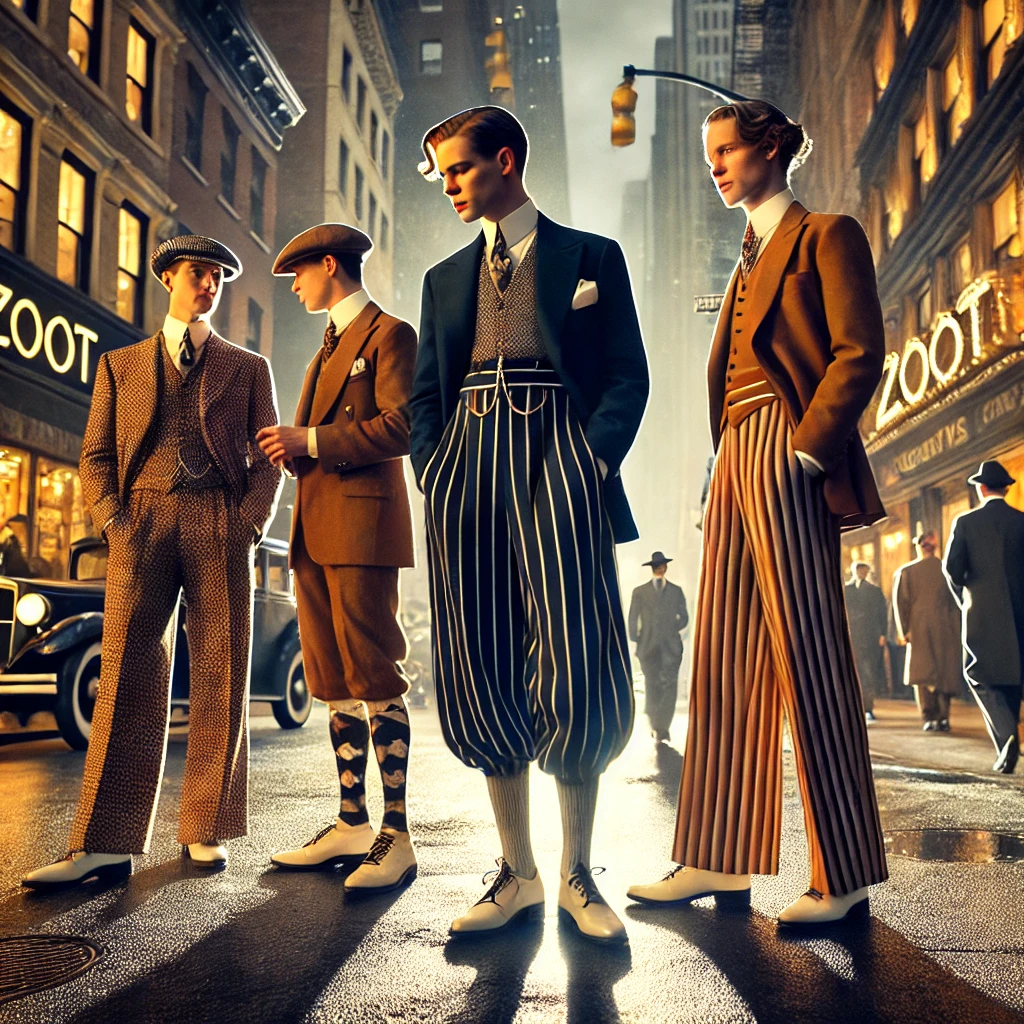
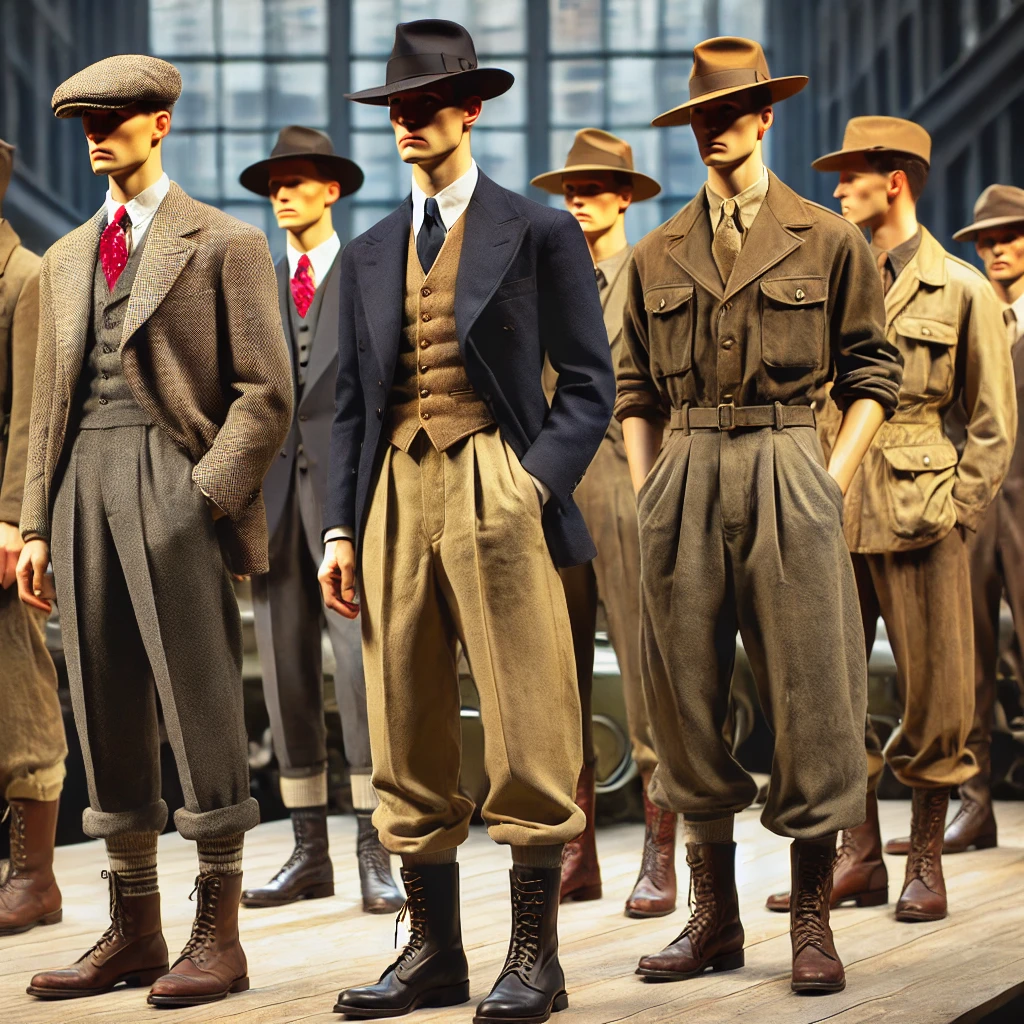
Men’s Fashion in the 1930s
In the 1930s, American men’s fashion was characterized by elegant and practical styles influenced by the Great Depression.
Men wore single, double-breasted suits with broad shoulders, high-waisted trousers, and often patterned fabrics. Casual wear included sports jackets, sweaters, and knitwear.
Accessories like fedoras, wide ties, pocket squares, and suspenders were common.
Outerwear featured tailored overcoats and trench coats, while footwear consisted of polished Oxfords and brogues. The overall look was conservative yet sophisticated
Men’s Fashion in the 1940s
In the 1940s, American men’s fashion was influenced by World War II, leading to practical styles. Suits were simpler with narrower lapels and minimal detailing. Military-inspired clothing like bomber jackets and trench coats were popular.
Casual wear included knitted sweaters and sports shirts.
Accessories were minimal, with fedoras remaining popular. Footwear was practical, with sturdy Oxfords and loafers.
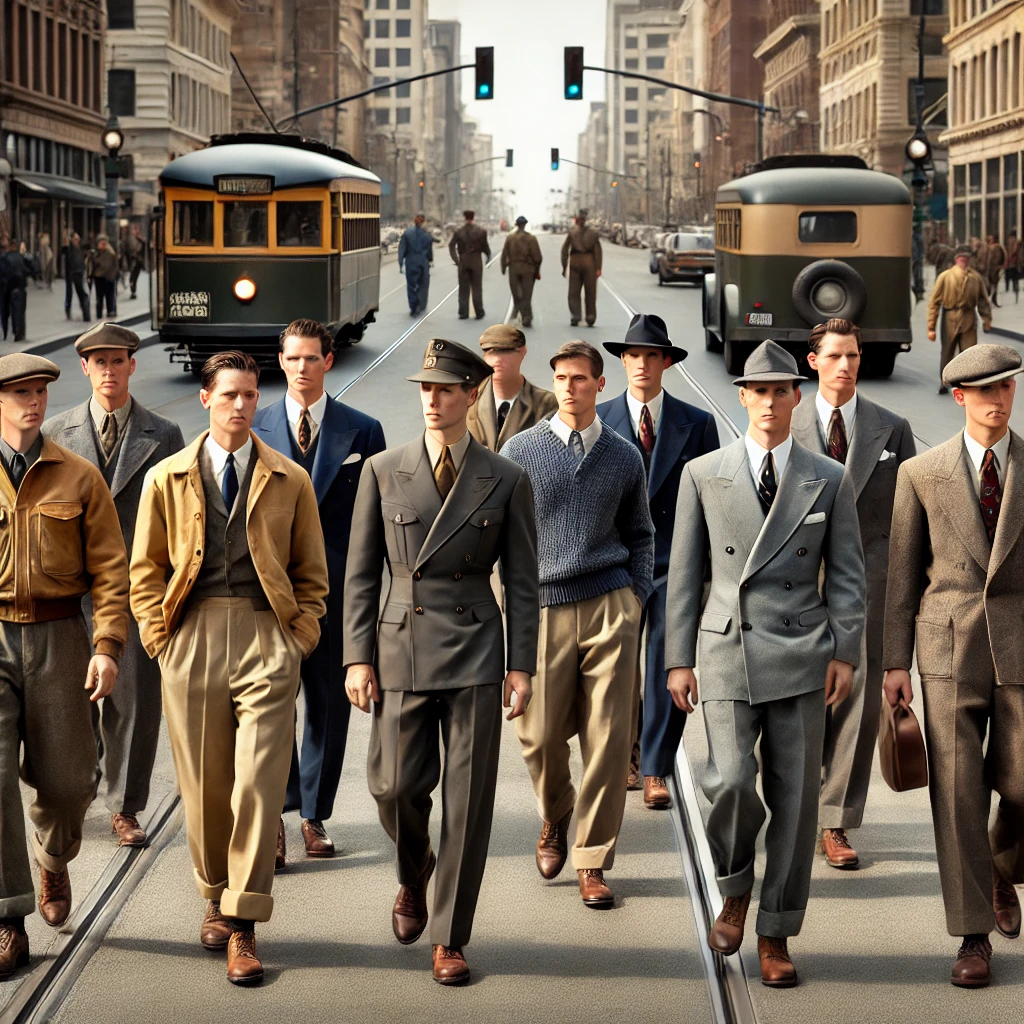
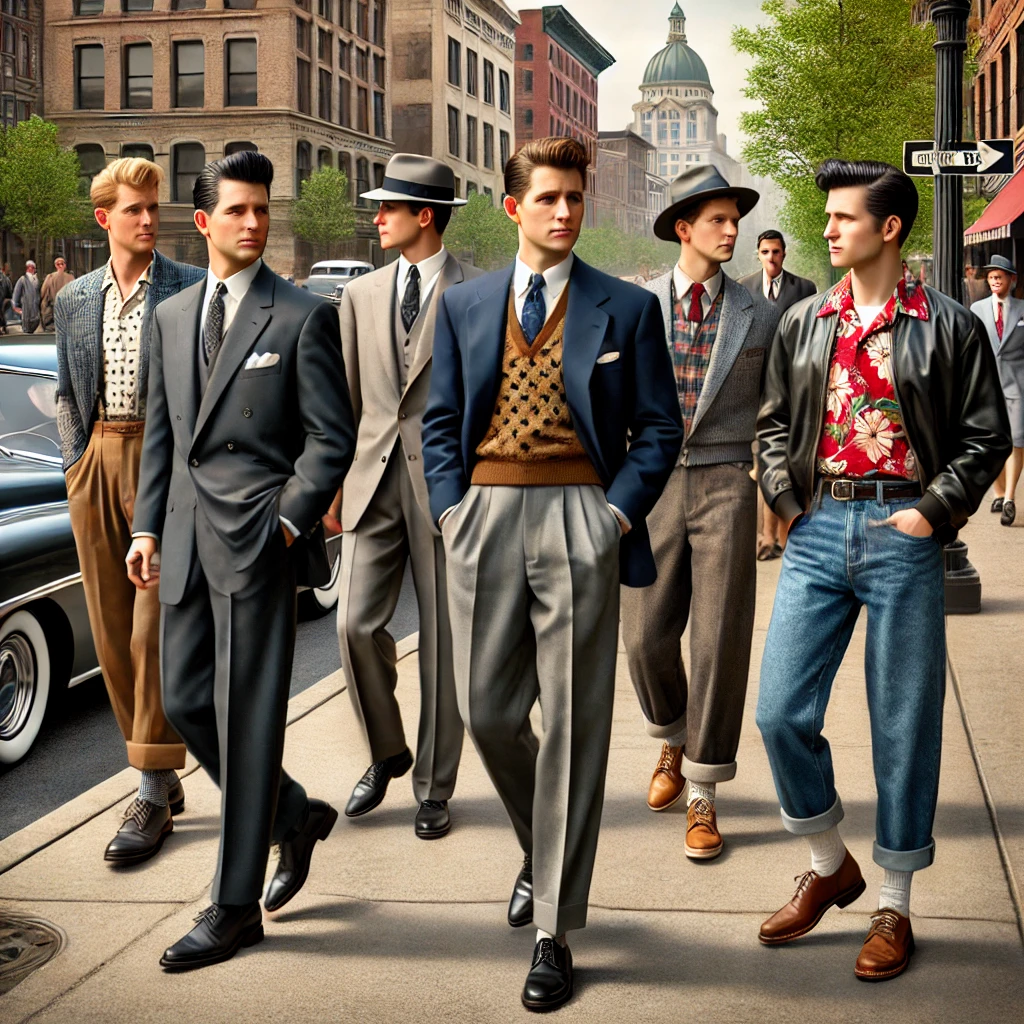
Men’s Fashion in the 1950s
The 1950s saw a return to prosperity and more relaxed styles. Men wore tailored suits with broader shoulders and slim ties.
Casual wear became more prominent, featuring polo shirts, Hawaiian shirts, and jeans. Leather jackets became iconic with the rise of rock ‘n’ roll.
Accessories included fedoras, narrow ties, and pocket squares. Shoes were polished, with Oxfords and loafers being common.
Men’s Fashion in the 1960s & 70s
Men’s fashion in the 1960s & 70S was marked by bold colors, patterns, and a shift towards more youthful styles. Slim-fitting suits with narrow lapels were popular. Casual wear included turtlenecks, slim trousers, and vibrant shirts. The Mod look, featuring tailored suits and Chelsea boots, gained popularity.
Accessories included skinny ties and bold patterns. Footwear was diverse, from polished shoes to boots and loafers.
Clothing was more eclectic and relaxed. The disco era introduced platform shoes and flashy accessories. Accessories like wide ties, aviator sunglasses, and large belt buckles were common.
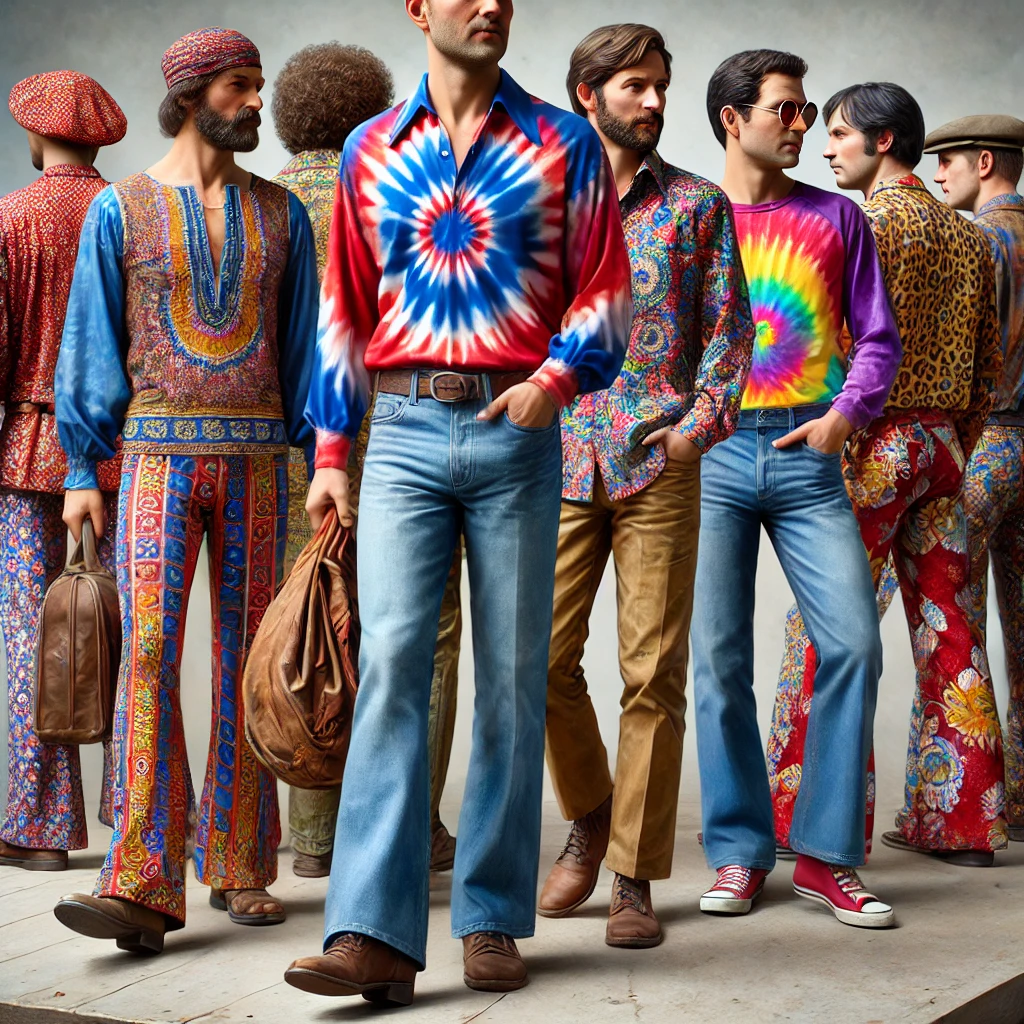
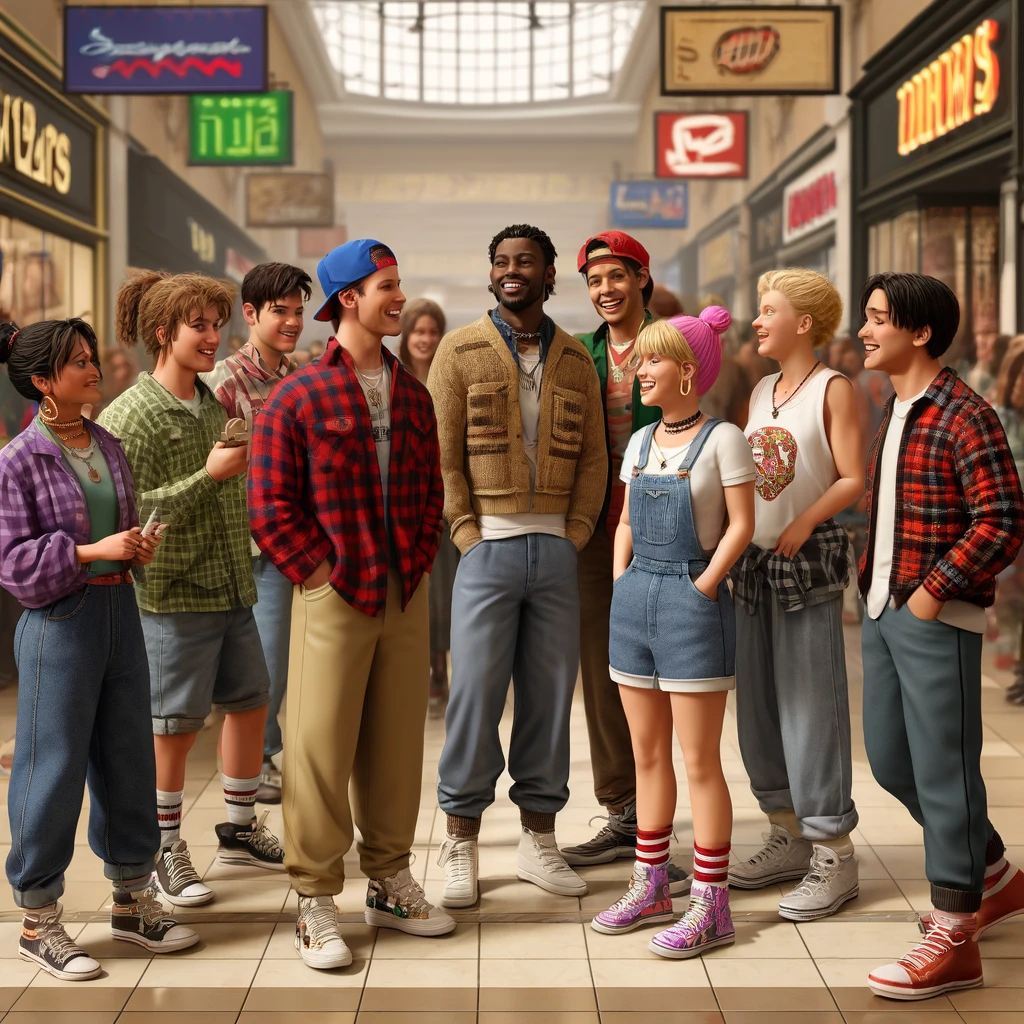
Men’s Fashion in the 1980s & 90s
The 1980s were characterized by bold, extravagant styles. Power suits with broad shoulders and bold colors were popular for formal wear.
Casual wear included designer jeans, graphic t-shirts, and tracksuits. The preppy look featured polo shirts, blazers, and loafers.
Accessories included wide ties, suspenders, and statement watches. Sneakers and loafers were common footwear choices.
Men’s fashion in the 1990s was marked by a shift towards casual and grunge styles. Baggy jeans, flannel shirts, and graphic t-shirts were popular. Sportswear, including tracksuits and athletic shoes, became mainstream.
Men’s Fashion in the 2000s
In the 2000s, men’s fashion blended various influences. Key trends included baggy jeans, graphic t-shirts, and cargo pants, often inspired by hip-hop culture. The preppy look featured polo shirts and khakis, while denim was a staple.
Accessories like baseball caps, beanies, and oversized belts were popular. Business casual looks included button-down shirts and blazers, reflecting a mix of relaxed and refined styles driven by both streetwear and traditional influences.
Footwear ranged from sneakers to casual loafers.
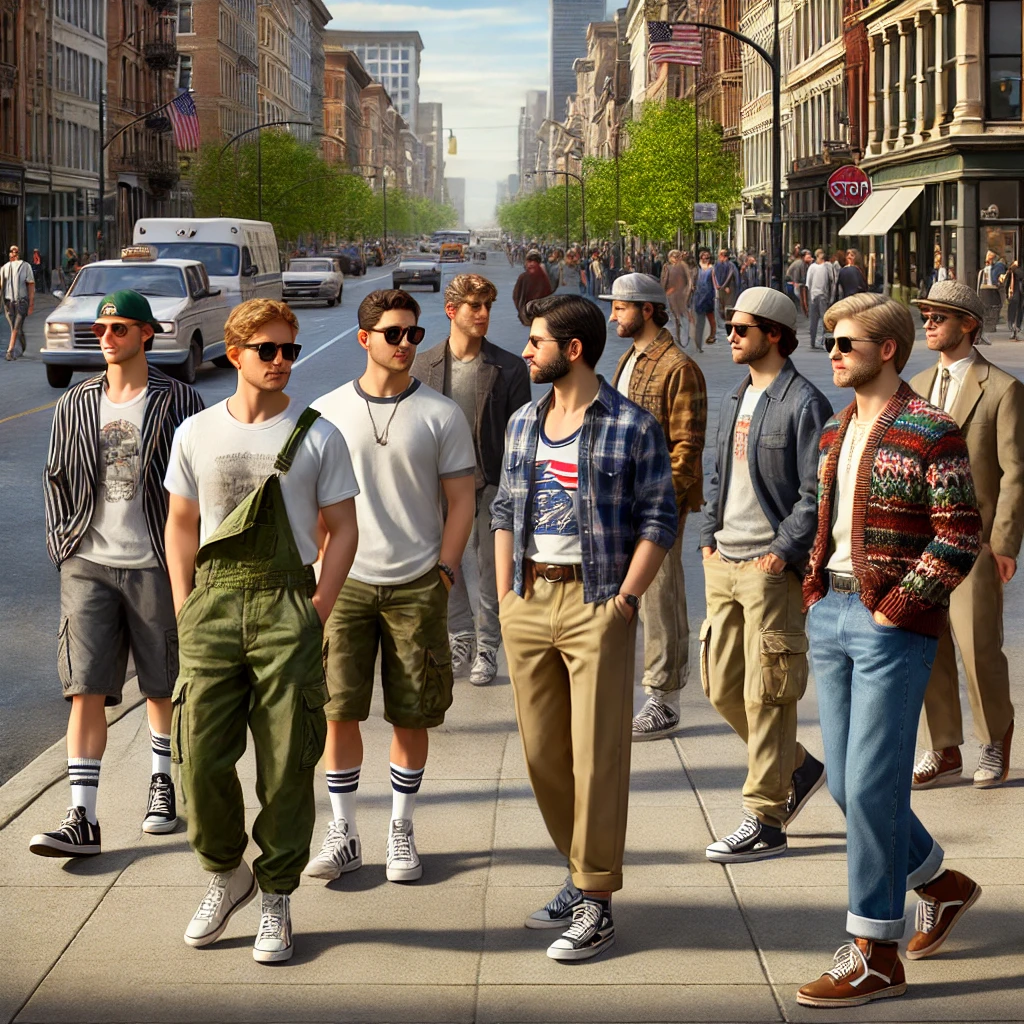
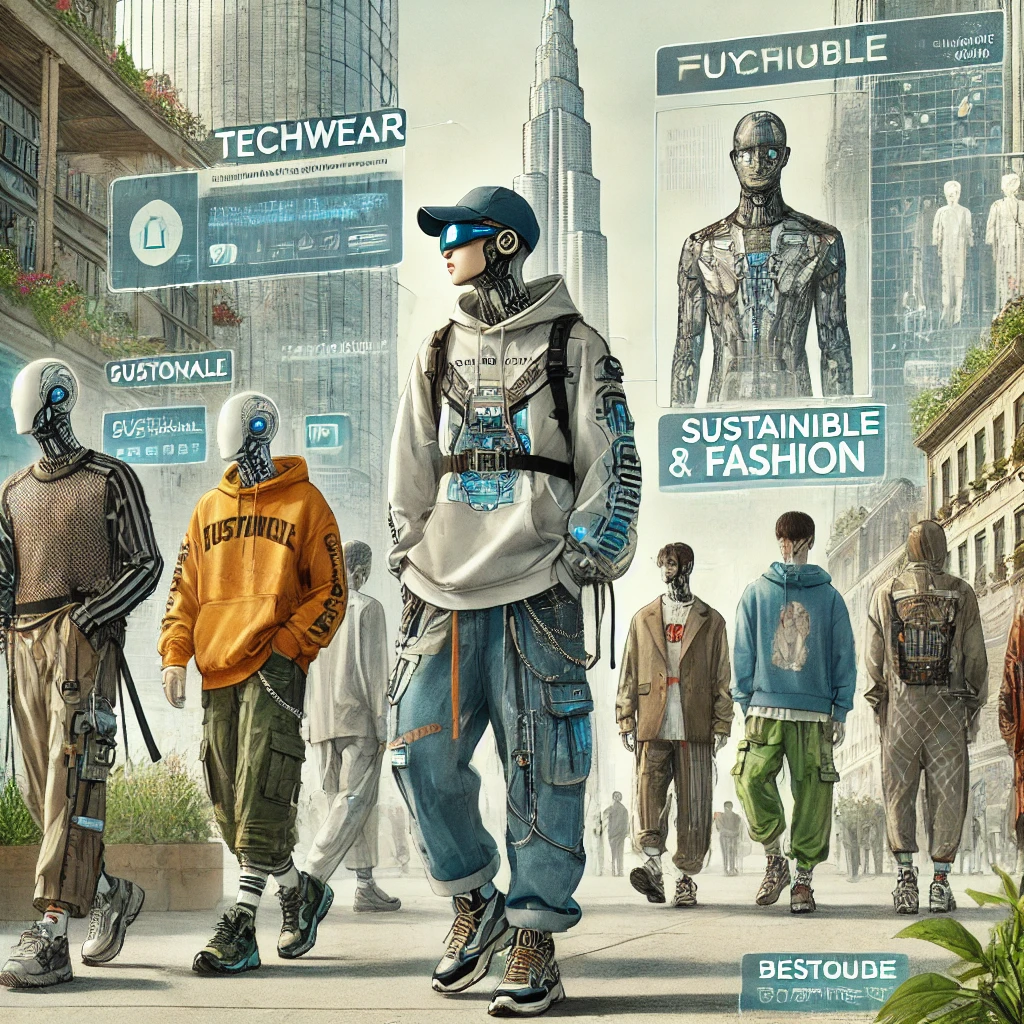
Fashion Today
Today men’s fashion is highly influenced by the internet and social media, leading to a blend of digital and physical styles. Key trends include techwear with functional, futuristic designs and sustainable fashion focused on eco-friendly materials.
Streetwear remains dominant, featuring oversized silhouettes and bold graphics, while vintage and retro styles are resurgent.
Personalized and customizable clothing is popular, driven by online platforms offering various options. The internet’s global reach has facilitated the mixing of cultural styles, creating unique and diverse fashion statements.
Is Men’s Fashion Growing?
Yes, men’s fashion is growing, and it is doing so at an impressive rate. The global menswear market has seen substantial growth over the past decade. This growth can be attributed to several factors:
- Increased Awareness and Interest: Men today are more fashion-conscious and willing to invest in their appearance. The influence of social media, celebrity culture, and fashion influencers has played a significant role in this shift.
- Diverse Trends and Styles: There is a greater acceptance of diverse trends and styles in men’s fashion. From streetwear to sustainable fashion, men have more options than ever before.
- Technological Advancements: The rise of e-commerce has made fashion more accessible. Men can now shop for the latest trends online, often at more affordable prices.
- Cultural Shifts: Changing societal norms have also contributed to the growth of men’s fashion. There is less pressure to conform to traditional gender roles, allowing men to express themselves more freely through fashion.
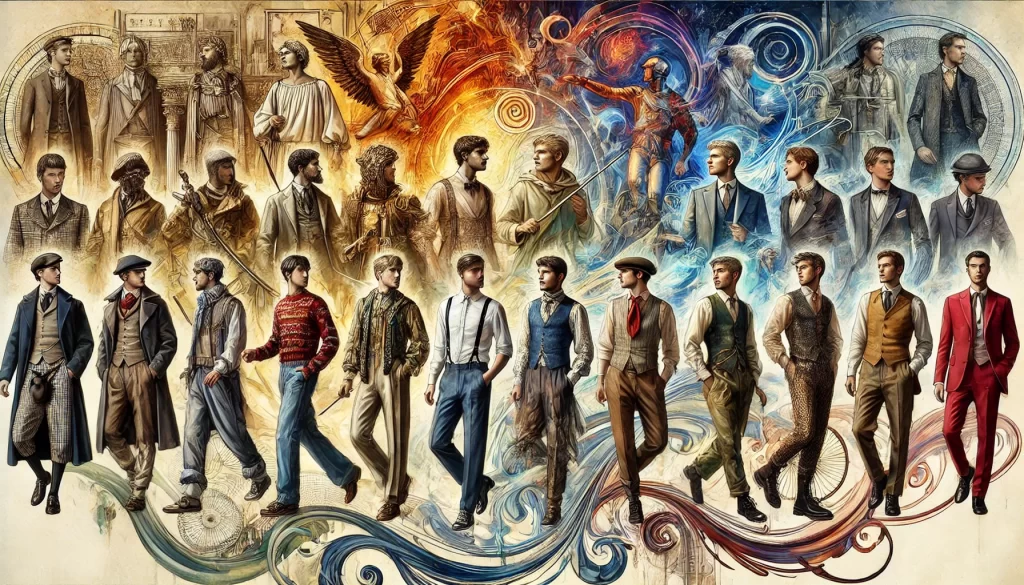
How Did Fashion Change from Time to Time?
Here is a decade-by-decade breakdown of how men’s fashion has evolved over the last 100 years:
- 1900s: Men’s attire primarily focused on formal wear, specifically suits. These typically consisted of a jacket, trousers, a waistcoat or vest, a round-collared white shirt, a necktie, and derby or bowler hat.
- 1910s: Similar to the 1900s, but with a slight relaxation in formality due to the impact of World War I.
- 1920s: The Roaring Twenties brought the iconic zoot suit and more relaxed styles influenced by jazz culture, especially in cities like New York.
- 1930s: The Great Depression led to simpler, more conservative clothing.
- 1940s: Wartime rationing influenced practical and functional fashion. Post-war prosperity led to a resurgence in tailored suits.
- 1950s: Clean-cut looks with tailored suits, narrow ties, and a sense of formality dominated men’s fashion.
- 1960s: The counterculture movement introduced bold colors, patterns, and unconventional styles.
- 1970s: Continued experimentation with fashion, including bell-bottoms, tie-dye shirts, and hippie influences.
- 1980s: Power dressing with oversized blazers, bold colors, and an emphasis on brands became the norm.
- 1990s: Grunge and laid-back styles with flannel shirts, ripped jeans, and a more relaxed approach took center stage.
- 2000s: The rise of casual wear and the influence of hip-hop culture. Athleisure became popular.
- 2010s: A mix of tailored and casual styles emerged. The rise of fast fashion and online shopping reshaped the industry.
- 2020s: Emphasis on sustainability, diversity in styles, and the impact of social media influencers continue to drive men’s fashion trends.
Fashion Moving Forward
Men’s fashion has undoubtedly come a long way, reflecting broader societal changes and technological advancements. From the formality of the early 1900s to the diverse and expressive styles of today, the evolution of men’s fashion is a fascinating journey that continues to unfold. Whether influenced by European fashion, the vibrant energy of New York, or global movements, men’s fashion remains a dynamic and ever-evolving aspect of our culture.
If you need more inspiration for your wardrobe, consider exploring other modern styles.